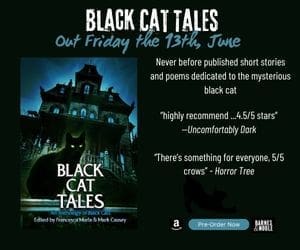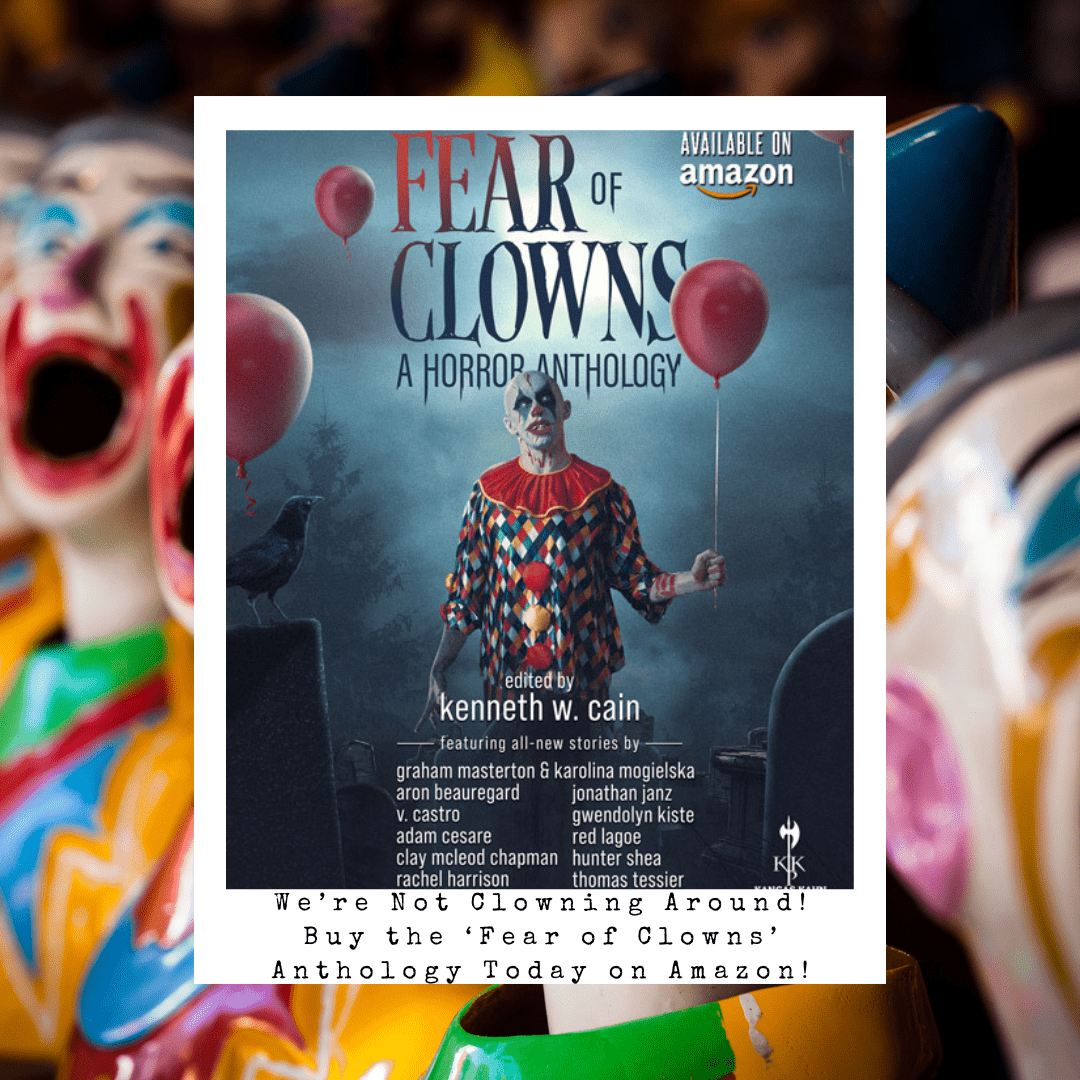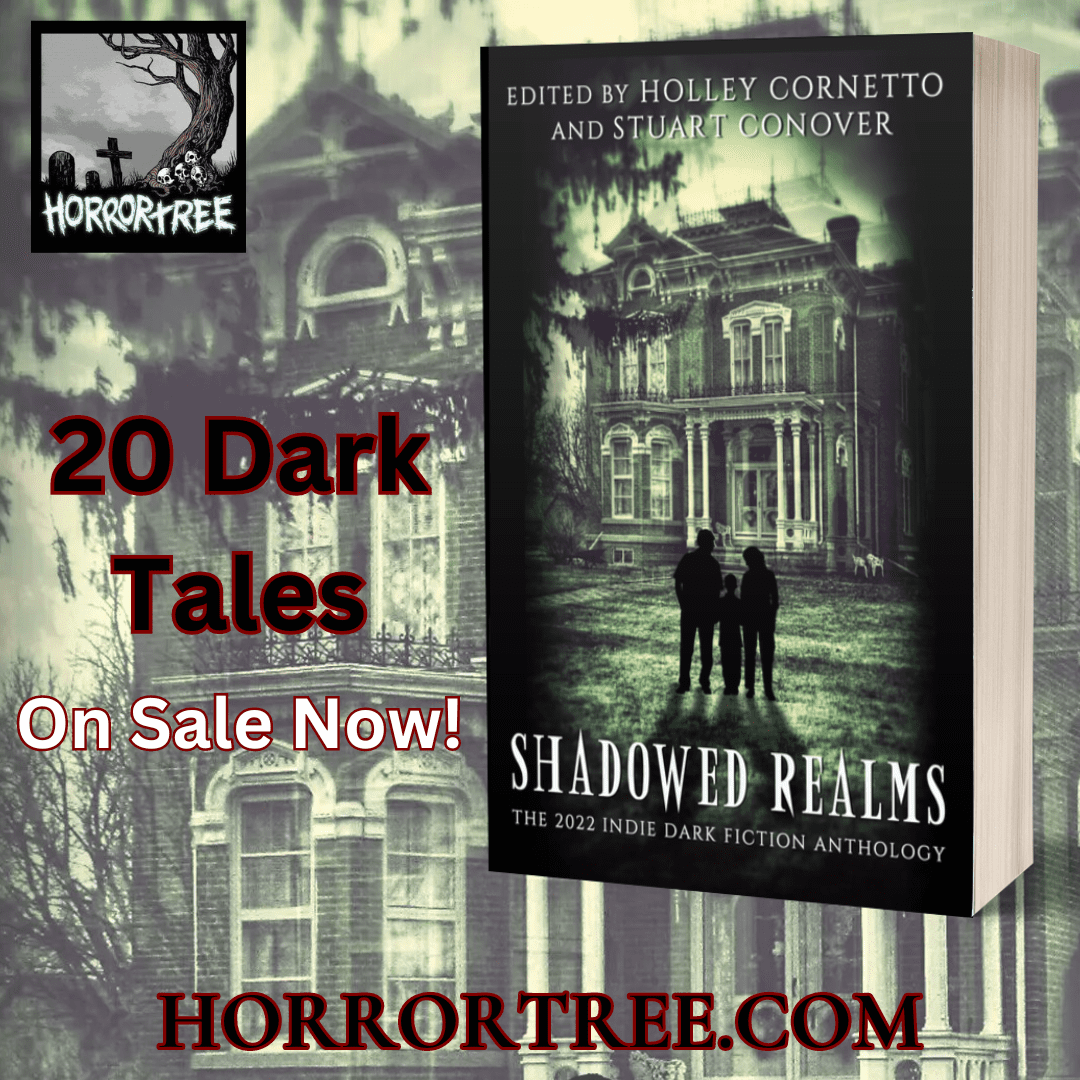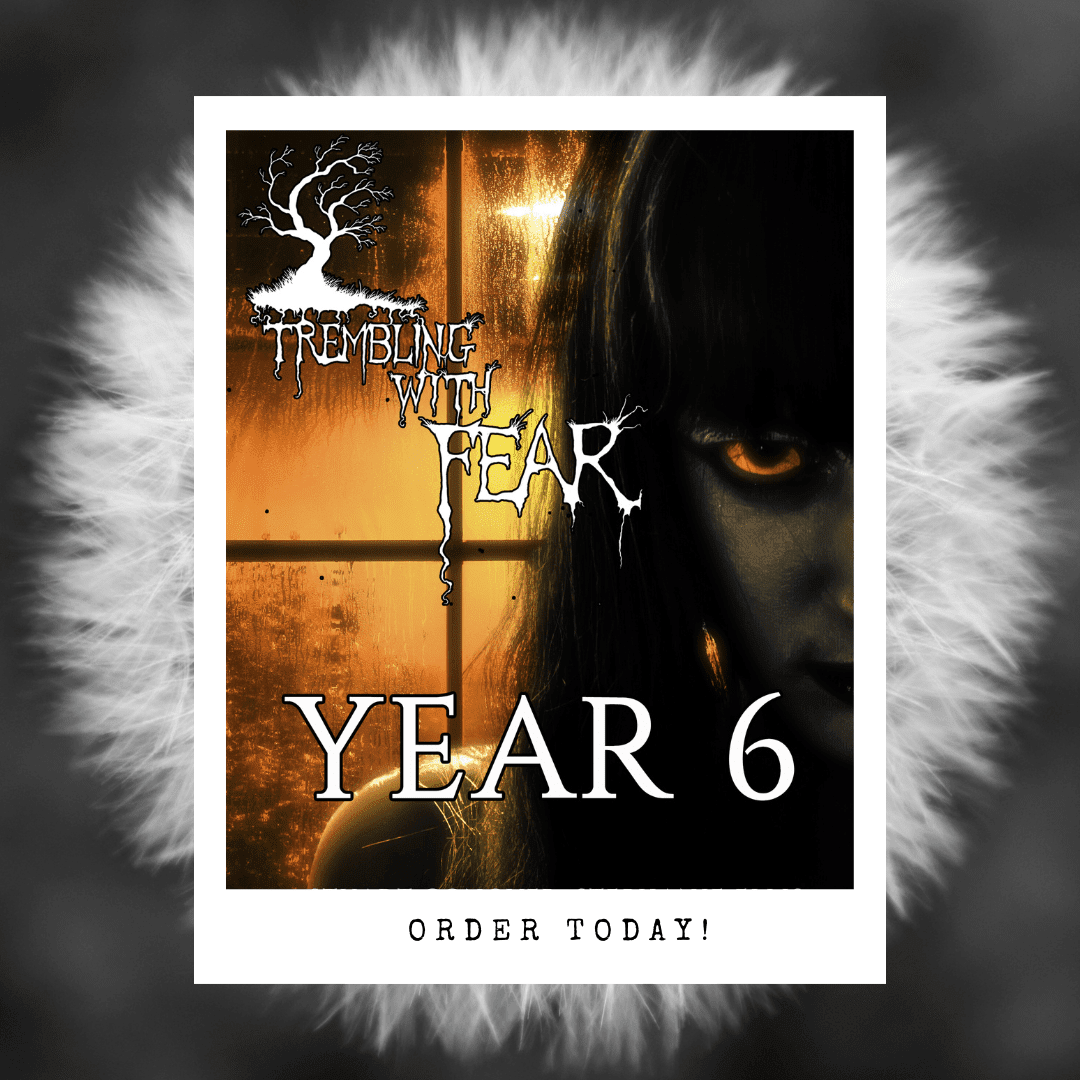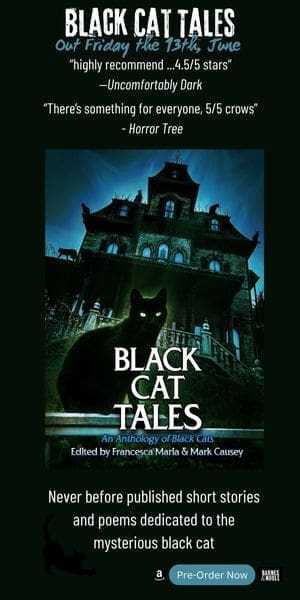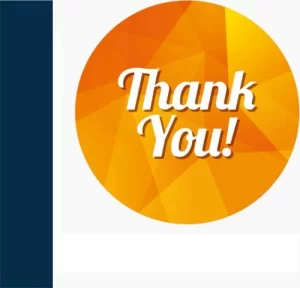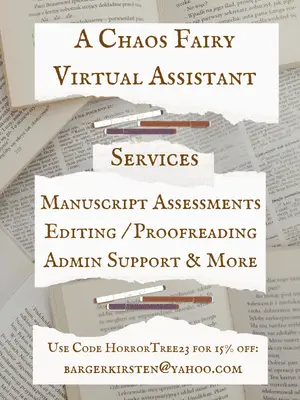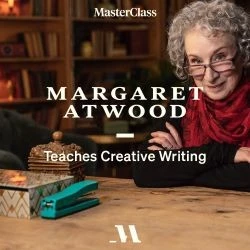
 Selene – First, tell us a bit about yourselves, and your background in writing and art. The bio info on your websites is a little thin.
Selene – First, tell us a bit about yourselves, and your background in writing and art. The bio info on your websites is a little thin.
Josh – Josh Finney is an author of sci-fi, horror, and neo-noir. He is 5’6”, weighs 155 lbs on a full bladder, and has black hair that is slowly going silver. If someone was to play Josh in a movie about his life, it would be a young Brad Dourif, best known as being the voice of Chucky—although Ishi is more akin to Brad’s portrayal of the twisted mentat Piter De Vries in the film Dune.
If Josh were a beverage, he’d be a cup of scalding coffee. If Josh were a celestial body he’d be a planetoid in the Oort Belt. Josh’s best friend is a rodent. He gets his best ideas while in a half-awake state. He eats raw oatmeal. Every day. He listens to music that could be mistaken for a factory collapsing. He’s seen ghosts, spontaneous human combustion, and a UFO in broad daylight. One of those prior statements is not true. If you were to break Josh down into his key chemical components he’d be at least 3% coffee. The rest would be piss and vinegar. His atomic number is 60: Neodymium.
When Josh throws parties he serves heavy water and yellow cake.
Josh is an unlucky son of a bitch. He’s been in two serious car collisions and been shot in the back. Josh is a lucky son of a bitch. He’s walked away without a scratch from two serious car collisions and survived an almost-fatal gunshot wound.
Josh Finney is soon to ditch that by-line for J. Ishiro Finney. This is because when people hear the name Josh Finney they remember it as “Jack Finney,” famed author of the sci-fi classic, Invasion of the Body Snatchers. This is a problem. Works written under the “Josh Finney” name include: Casefile: Arkham, Titanium Rain, Utopiates, and World War Kaiju.
 Patrick – I have been at this art thing for over 15 years, with experience in games, multimedia, art direction and comics. I’ve done a lot of tabletop game and CCG work, so many people know my art without having any idea who I am, including popular games like Arkham Horror, Call of Cthulhu, World of Warcraft’s Hearthstone, Dungeons & Dragons, Legend of the Five Rings, Numenera, World of Darkness, and nearly 100 cards for the Game of Thrones CCG.
Patrick – I have been at this art thing for over 15 years, with experience in games, multimedia, art direction and comics. I’ve done a lot of tabletop game and CCG work, so many people know my art without having any idea who I am, including popular games like Arkham Horror, Call of Cthulhu, World of Warcraft’s Hearthstone, Dungeons & Dragons, Legend of the Five Rings, Numenera, World of Darkness, and nearly 100 cards for the Game of Thrones CCG.
I was also on contract with Marvel’s marketing division for a while, creating concept art, point of sale advertising, and dozens of pictures for the Marvel Style Guide.
In comics I’ve done a lot less work but have had the opportunity to do a lot of different things. I generally only do one or two projects a year in this field. Most recently I provided interior art and covers for Irwin Allen’s Lost in Space: The Lost Adventures from American Gothic Press. My graphic novels include Casefile: Arkham Vol. 1, World War Kaiju, Nain Rouge: The Red Tide, and Starkweather: Immortal.
And of course the upcoming Casefile: Arkham volume, which we just happen to be here to talk about!
Selene – What about the horror genre appeals to you?
Josh – First, bear in mind I don’t see
CASEFILE: Arkham as a horror story. It’s a detective noir at heart. It just happens to be in a horrific world where monsters, god, and black magick exists. One aspect I loved about the first book,
Nightmare on the Canvas, is it doesn’t need the monster to remain functional. It’s just a story element. This is less so in the second book, but it too is still a noir at heart.
But what about horror appeals to me? I’m drawn to the genre for reasons different than most. People often explain their love of horror having to do with the thrill ride of being scared or even personally identifying with the monster. There’s also those sadist-voyeurs who enjoy seeing death and suffering at 24 frames a second. For me, though, I consume horror in the same way I do war stories. It’s a crucible. It’s delving into the furthest extremes of the human experience and seeing how we all respond. Who breaks? Who sacrifices themselves? Who survives and why?
I’m a bit of a latecomer with horror, mostly having ignored the genre until the mid-2000s. A decade prior I’d been the victim of a random act of gun violence, one which started with a 9mm bullet finding its way into my stomach and ending with me near death on an operating table. My body survived. But when all the buried emotional damage of the attack finally found me, I found the horror genre.
Submerging myself in all forms of horror. I literally watched and/or read everything I could, from the most gut wrenching of slasher flicks, to the more terrifying of cerebral horror. Stories of people struggling (and sometimes fighting) their way through these extreme situations resonated. Good horror explores questions like: How do we face death? How do we face loss? When the world goes to hell, does our humanity survive?
Patrick – I like the same things about the Horror and Detective Noir genres: the fact that if you test yourself by looking into the darkness of those stories without blinking, you’ll come away having learned a lot about who you are. Those bad things that you were afraid to admit about yourself, and those good things that you didn’t know were there. They are genres of self-discovery. And both very thrilling because of it.
Making art for a dark world like Casefile is difficult but rewarding. It’s not just gross-out horror, it’s slow tension, creeping unease, a dark buildup of dread and worry. If I can get the art to take the viewers to a place where they feel honestly uncomfortable, then I’ve definitely succeeded. That’s hard work but it’s a challenge I like.
Selene – How did you come to collaborate?
Josh – Both Patrick and I had books published by Archaia Press back in the 2000s. So we ended up tabling together at a lot of conventions. Then one night after a show in San Francisco we went out on a bar hopping shit show of a bender. Somehow we ended up at Coit Tower, blitzed on peyote, acid, and good Irish rye. That’s when the spirit of Jack Kirby materialized, taking the form of the great Red Celestial. And he said, “I come bearing tidings of horrid shit to come. Comics are getting to be real crap. You know it, I know it, even the Big Two knows it. And it only gets worse! I foresee a bleak time soon when Squirl Girl will become a plague upon the 616 Universe! A Scrappy-Doo sized turd in the punch bowl! And she shall smear a rainbow colored skid mark of pseudo-intellectual neo-Marxist claptrap and bad art across the pages of once great titles. You two, you kids, you gotta do something about this horseshit. So, make good books. Be the one, shining light of hope in this bleak shit show to come.”
After that, what choice did we have? So Patrick and I started creating comics together.
Patrick – We’ve since stopped taking Peyote, however.
Selene – You have two books out now, Casefile: ARKHAM Her Blood Runs Cold, and Casefile: ARKHAM Nightmare on the Canvas. What are they about, and what kind of reception have they had?
Josh – So far? Excellent.
Patrick – As for the “about”: they are based on our mutual love of the worlds of both Raymond Chandler and H.P. Lovecraft, and to that end we’ve created the character of Hank Flynn, P.I., working cases in Lovecraft’s fictional city of Arkham, Mass., in the bleak post-WWII era. Each story has elements of existing Lovecraft lore woven into Noir-style crime stories.
It’s a genre combination that we both love, but there’s very little of it. We’ve wanted to see more of it for years, so we just had to make it ourselves! And it seems like a lot of people are enjoying what we’ve done with it so far.
Selene – Why Mythos? I know that seems like a loaded question, but there seems to be a large body of work related to Lovecraft, and some rather strange politics around the man and his work. What about the Mythos appeals to you?
Josh – Is it really a loaded question though? It’s only been in the last five year or so that suddenly the gatekeepers of pop-culture have demanded we flog ourselves for enjoying dead authors who were less than perfect people. Ask yourself, who is worse: Lovecraft who was a mentally-ill shut in who expressed racist views, or Marion Zimmer Bradley who was a known child molester? Lovecraft said bad things, but never hurt anybody. Marion Zimmer Bradley said all the right things, but also committed horrible crimes of sexual abuse against her own children? Does either lessen the worth of the books these authors wrote? And if we’re so concerned with the wrongs of dead authors, why hasn’t the SFWA or World Fantasy Awards gone on a crusade against the works of Bradley?
So why Lovecraft’s Mythos? Because it’s brilliant stuff.
(Note from Selene: MZB’s face wasn’t on the award, and she hasn’t escaped criticism, either).
Patrick – As an artist, two of my favorite writers to visualize are Lovecraft and Michael Moorcock, for the same reasons. That is that while they lushly describe what characters do in REACTION to the strange and otherworldly things they see, and there are a few fleeting physical descriptions, much of the actual visuals are left to the reader’s imagination. And that means for artists that with only a few important visual touchstones, WE can visually interpret things as we like, more often than not.
So for instance, in our upcoming volume we were able to interpret two pillars of the Mythos, Shub-Niggorath and Dagon, in new and different ways all on our own. I got to do a lot of that with the dozens of cards I did for the “Call of Cthulhu” CCG as well; it’s always a great feeling to get the chance to interpret the unimaginable.
Selene – I watched Josh’s video on how to write for sequential art and horror comics, and I enjoyed the peek at the process and have a few questions. First, can you give us a definition of what sequential art is, and how writing for a comic differs from simply writing a short story or a novel?
Patrick – Sequential art (graphic novels, comic books, comic strips) is a narrative medium that uses still visuals combined with words to create a unique combination of pictures and prose in sequence to tell a story. Technically, comics can be done without the “prose” part, telling a story with only the pictures, but usually words are employed to contribute to the richness of the storytelling.
Some people look at comics and think that they are very much like a movie storyboard, and that the writing process must be like writing a screenplay. And there is certainly some overlap. But writing for sequential storytelling has a lot of challenges and advantages that make it quite different. For instance, the comics writer has to deal with the flow of panels on the page, and the physical act of getting to the end of a page and turning it.
There are also important considerations about just how much can happen in a panel: how much physical room is there for the words, how many individual actions should there be, how much it focuses on one or more characters — all things to think about as the page is composed.
And then there’s the problem (and opportunity!) of pacing. Larger panels tend to be read more quickly, while smaller panels tend to slow down time. But paradoxically, a very large panel, most or all of a page, stops the narrative dead in its tracks for a moment. You can’t do this time dilation as effectively in movie because the timeline of film is always moving forward, even with slow-motion. In prose, you have the problem that your reader reads at pretty much a fixed speed, and the only way to slow them down is to write more words. In comics, if you do your job right as a writer or artist, time goes faster or slower without the reader even being aware of your manipulation. It’s subtle and exciting, but not always easy to pull off.
Selene – While I was reading Casefile: Arkham, Her Blood Runs Cold, I really enjoyed the artwork, but as a reader, I found that the buildup to each plot point felt different than in a novel or even in a film. How do you build suspense in the graphic form?
Josh – For comics, visual suspense is dependent on two things: 1) Effective use of panel layout and page turning. 2) The skill of the artist. Everything else comes down to the writer’s ability to create characters you care about and placing them in threatening situations. And those threats don’t have to be to a character’s physical well-being. There are threats to sanity. Threats to reputation. Threats to one’s ability to live with themselves. And most importantly, threats to loved ones. It’s the threat and the uncertainty of its outcome that creates the suspense.
Patrick – From a visual standpoint, Josh really hits it on the head with his #1. Control the pace and what you reveal with good panel layout and planning what’s on the page you’re about to turn to. Get the reader to be excited about turning each page and then reward them with a payoff when they get there.
I also like to make panels that are packed with information wherever possible — this slows down the reader and (if I’ve done my job right) makes them almost subconsciously search for important details, so they won’t look ahead too quickly. And extra panels showing some weird random stuff (overlapping time or non-sequitur storytelling beats) will slow them down even more. This tends to heighten the sense of dread that we’re trying to build.
Selene – In the video, Josh mentioned how important it is to have a rapport between the writer and the artist in a graphic novel. Can you describe your collaborative process?
Patrick – There are probably nearly as many ways to collaborate in comics as there are artist/writer teams, so ours is unique to our own skills. We’ve tried a lot of different methods and not every page is the same! But over time, this is the one we’ve sort of landed on. In many ways, our collaboration can be compared to filmmaking in that Josh is the writer/producer, and I’m the director/cinematographer, SFX crew, and all the actors.
Each page can be thought of as an individual small project with its own narrative and visual challenges. To begin, Josh will put together a rough script, using dialogue that isn’t entirely finished, but gives me a good idea of each character’s motivations and emotions. Then, because he has done the visual end of comics himself quite a bit, he lays out the panels on the page, often with reference from photos or simple drawings of where he wants the characters placed. He puts in the dialogue in the form of word balloons on the page as well, so I know roughly how much room they’ll take up and what sort of compositional flow he’s looking for.
From there I have the freedom to pretty much do what I want with the page. Josh knows that I understand the story dynamics he’s after, and I can either use his layout exactly or completely change it, depending on what I think will be needed for the visuals. As long as I leave enough room for the word balloons and try to tell the same story, we’re good to go!
Another thing Josh trusts me with is the “acting”. He uses minimal descriptions of how or how much the characters are emoting in each panel, and lets me direct my cast of “actors” any way I like, based on the dialogue and situation.
Next, the page goes back to Josh, who will put in the final dialogue and also let me know if he needs any changes to the art. He often changes a scene’s script at this point based on something I may have done with the characters that he wasn’t expecting, making for a fun and almost improvisational feel to the collaboration.
Selene – Josh also pointed out that if you want a lucrative career, writing and art for comics isn’t it. If you weren’t doing this, what else might you be doing?
Josh – To paraphrase the great Doctor Jordan Peterson, “Creative people…if they’re not creative they’re miserable. They have to do it.” Little more than a decade ago I was working a great job, making very good money as an art director. During my lunch I was writing. When I got home I was writing. When I had spare moments I was writing. I wasn’t sleeping. I was depressed. I was getting in trouble at work. I was also suicidal. Then I was fired when I told a supervisor to “Go fuck yourselves!”
So in short. Either I do this. Or I swallow a bullet.
Patrick – I too was working as an Art Director, making good money with decent hours. And then I said to myself “why should I have it so easy? I am making far too much money!” And a comics artist was born!
Selene – What do you consider some of your influences, on art, and on your writing?
Josh – Well with CASEFILE: Arkham I was specifically mimicking the style of the golden-age of noir. The writings of Raymond Chandler and James M. Cain. Classic films such as Out of the Past, Detour, Gilda, Sunset Bvld, Where the Sidewalk Ends, as well as lesser know gems like Cry Danger and Too Late For Tears. The approach to CASEFILE: Arkham was to write it as a straight 40s-era noir story that just so happened to be taking place in Lovecraft’s Mythos.
As for personal influences, I can say it all comes down to two names: John Carpenter and Mamoru Oshii. The rugged individualism of Carpenter’s film career has been a massive influence on my own. From Carpenter’s I’ve come to learn three maxims which I live by:
- No project is just a project. Always treat your current endeavor as if it’s the most important thing you’ll ever create.
- Maintain control. Never let someone else hijack your vision—especially the “money people”—at the end of the day it is YOUR name that will appear on this project, not theirs.
- Don’t take any shit.
Meanwhile, the influence of Mamoru Oshii is a bit harder to explain. While primarily known as an “anime director,” Oshii is a master at constructing deeply moving tales that are philosophical, rife with symbolism, and full of larger ideas, yet remain fundamentally sci-fi action films. There’s also a real beauty to the visual, the pacing, and more cerebral elements. The stories Oshii tells are the bar which I aim for in my own work.
Patrick – The most realistic answer for art influences is “everything I see.” Every artist I look at influences me in some way, even if on a subconscious level. That inability to just enjoy art without examining it on a structural level is the curse of most artists, I’ve discovered!
Maybe a more interesting answer is that yes, I have a number of formative influences, really cool artists I’ve studied on purpose for their craft and vision and quirks. In illustration I’d list N.C. Wyeth, Frazetta, Steranko, Basil Gogos, Dave McKean, the Hildebrandts, and Norman Saunders, among many others.
In the comics field, most of the artistic influences are also storytelling influences too. You can’t have one without the other, I think, or else it’s not a good comic. There I list Alex Raymond, Al Williamson, Steranko (again – his comics work is so different from his illustration), Jack Kirby, Barry Windsor-Smith, Steve Rude, and P. Craig Russell.
Oh and probably a million more! But if anyone reading this wants to check out any or all of the creators I’ve listed, I can guarantee you will not be disappointed.
Selene – A generic question, but I’m always curious: where do you get your story ideas?
Josh – That is the elusive question, isn’t it? Where do the ideas come from. Much of what I put to the page comes from that half-awake state that comes in the morning right before slipping completely out of a dream. Other times, it may be a persistent image that keeps popping up in my head that I need to put form to. Or I’ll have a moment when a number of seemingly unrelated ideas and concepts collide in my thoughts and begin to take shape into a story. For CASEFILE: Arkham, though, the process was more deliberate.
A few years ago, Patrick and I had just finished World War Kaiju, and a lot of fans had been asking if we’d do something Lovecraft related. This was because of Patrick’s extensive past of illustrating games for Fantasy Flight. At first, Patrick and I discussed possibly doing a straight adaptation of a Lovecraft story, but couldn’t really get excited at the idea of doing so. Then somewhere along the line we started discussing the overlap of noir and Lovecraft mythos and how nobody had done it in a way to our satisfaction. Somewhere out of all that talk CASEFILE: Arkham took shape.
Patrick – You forgot to mention the Peyote.
Selene – Let’s talk about the noir influence on Casefile: Arkham. Both novels have a 1940s setting, and a feel that’s a throwback to the stories of the day. Why did you choose this particular approach, and why does noir lend itself so well to the story you’re telling?
Josh – Once we knew our next project was going to be a noir, for me setting it in the 1940s was a must. The 40s were the zenith of noir’s golden-age. Most visuals we associate with the genre trace back to the films the era. I have a real love for the aesthetics, style, the lingo, and the “visial/verbal rhythm” of how those stories were told.
Patrick – Visually, I just love the look of the 1930’s and 40’s — the cars, clothes, buildings, it’s all a wonder to me. And the Film Noir style that started to take shape in the ’40’s is an important touchstone for me too.
Also, this series gave me a chance to really delve into the styles of my favorite comic strip artists Alex Raymond and Al Williamson (from their “Rip Kirby” and “Secret Agent Corrigan” strips, respectively) and see what made their photorealistic/Noir styles work. Raymond’s work was especially a perfect inspiration since his “Rip Kirby” detective adventure strip started in the same era our stories are set, and employed beautiful Noir techniques which was eager to study and incorporate into our aesthetic for Casefile.
Selene – What advice would you give to someone who wants to write, especially to write for graphic novels and comics?
Josh – Ignore the garbage that is being peddled as “graphic novels” today by mainstream comics, unless you want a guide for “what not to do” when creating. Read the classics, manga, read British and French graphics novels and really pull apart what it is that makes these stories tick. How the writer and artist speed up and slow down scenes. How layouts are just as important as the art and dialog. How emotions are portrayed. What makes an action scene “move” off the page. Read old 2000 AD comics, read Frank Miller’s Dare Devil, study the art of Mobius and Tsutomu Nihei.
And buy CASEFILE: Arkham. Okay, okay… I’m shilling, now.
Patrick – Take peyote, obviously.
Selene – What’s next for you, and do you have anything else you’d like to talk about? Thanks for taking the time to answer my questions!
Josh – Naturally, I want to do more CASEFILE: Arkham stories. I’ve grown to really love these characters and the world they inhabit. None of their stories are even close to a conclusion. I know ultimately Flynn’s arc must culminate in a showdown in Innsmouth, and Glynda’s past with the Goddess cult is a plot thread that we’ve just begun to explore. And at some point the Witchhouse, Randolph Carter, and Nytharlahotep will all have to find their way into our vision of a film noir Arkham. And I know Patrick has a special love for Lovecraft’s Colour Out Of Space. There’s also the possibility of novelizations of the CASEFILE: Arkham stories for all the little details and scenes I couldn’t fit in a 142 page graphic novel.
In the meantime, I’m looking to finish a handful of short stories, a prose novella and a full novel in 2018. All will be firmly rooted in cyberpunk and science fiction.
Patrick – Yes, we’re hoping the newest Casefile is a big hit, so we can do another one soon. We’ve got a lot of ideas and would both love to visit the world of Hank Flynn’s Arkham again. As for me, you can find me at www.megaflowgraphics.com, where you can see a lot of my art on comics, game illustrations and more, and buy stuff too! You can learn about upcoming work on my Facebook page “Patrick McEvoy Art”: www.facebook.com/PatrickMcEvoyArt/
Patrick’s Website – www.megaflowgraphics.com
Josh’s Website: www.jishirofinney.com
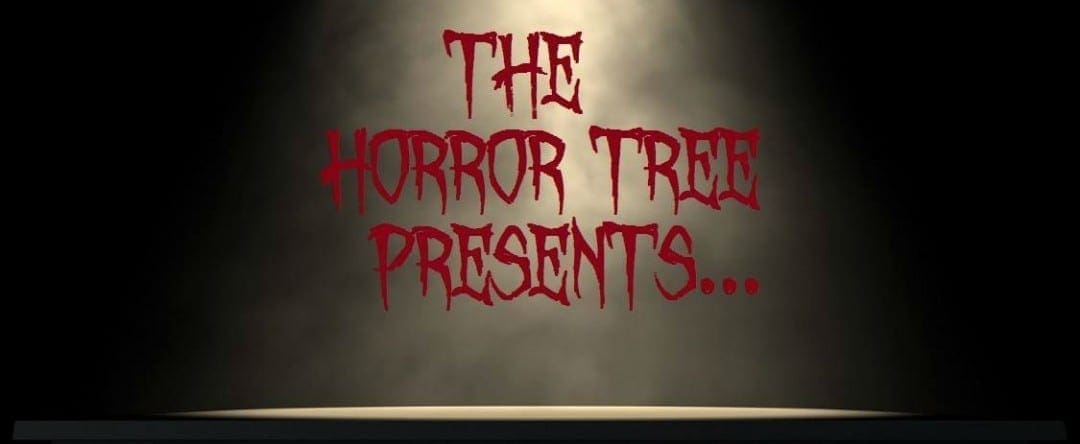
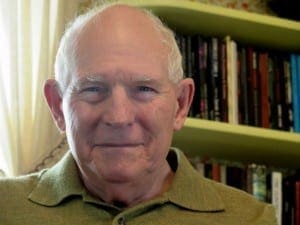 Selene – Welcome to the Horror Tree, and thanks for joining us today. Let’s start with you telling us a bit about yourself.
Selene – Welcome to the Horror Tree, and thanks for joining us today. Let’s start with you telling us a bit about yourself.  Selene – The Witch Made Me Do It is described as a book of “modern” fairy tales. How would you say a “modern” tale is different from a “classic” tale, and what’s your approach to writing one?
Selene – The Witch Made Me Do It is described as a book of “modern” fairy tales. How would you say a “modern” tale is different from a “classic” tale, and what’s your approach to writing one?
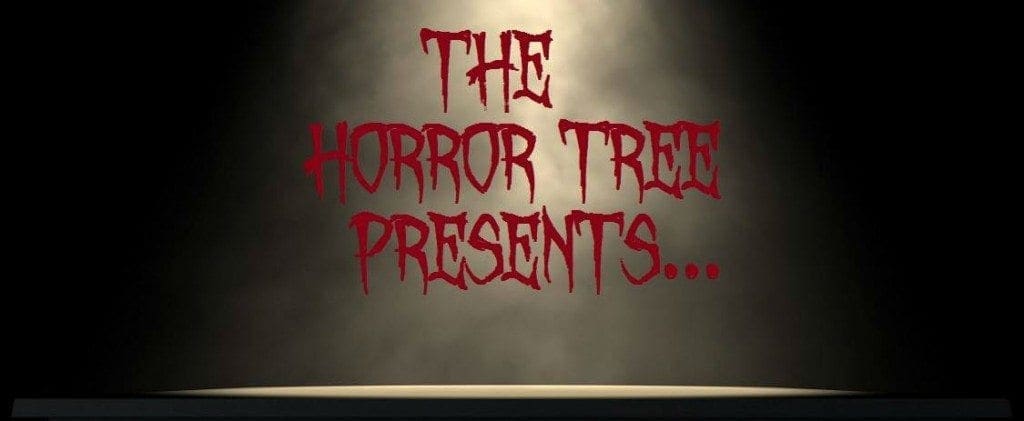
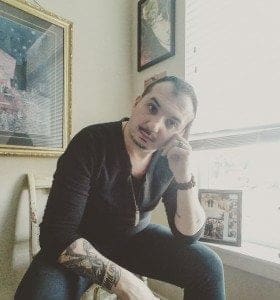 Selene – Welcome to The Horror Tree, and thanks for interviewing with us! First, please tell us a bit about yourself.
Selene – Welcome to The Horror Tree, and thanks for interviewing with us! First, please tell us a bit about yourself.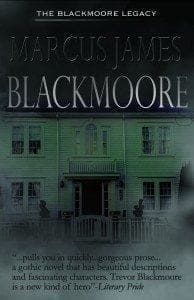 Selene – How long have you been writing, and what draws you to horror?
Selene – How long have you been writing, and what draws you to horror? 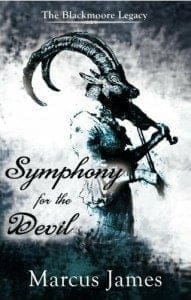 Selene – In addition to your own work, you host Brews & Books, and Queerly Spoken. Tell me about these events.
Selene – In addition to your own work, you host Brews & Books, and Queerly Spoken. Tell me about these events.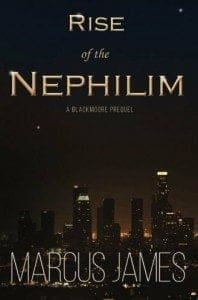 Selene – Your website mentions a Virtual Book tour. What is that? How did it go for you? Are you planning more?
Selene – Your website mentions a Virtual Book tour. What is that? How did it go for you? Are you planning more?  Selene – Your work is classified as “erotica.” As a writer, I’m usually not so great at writing sex scenes. How do/did you get past any reticence, and what are some tips and techniques for writing erotica?
Selene – Your work is classified as “erotica.” As a writer, I’m usually not so great at writing sex scenes. How do/did you get past any reticence, and what are some tips and techniques for writing erotica? 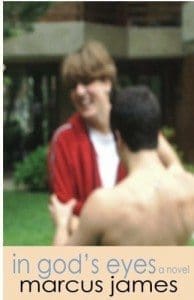 Selene – Do you feel that there’s a difference between LGBTQ literature and other types of writing? (I think we’ve come a long way to mainstream acceptance of LGBTQ culture, but there’s still a long way to go!). Is there a difference in how you approach your gay and straight characters?
Selene – Do you feel that there’s a difference between LGBTQ literature and other types of writing? (I think we’ve come a long way to mainstream acceptance of LGBTQ culture, but there’s still a long way to go!). Is there a difference in how you approach your gay and straight characters? 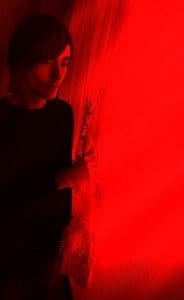 Selene – Thanks for joining us here at The Horror Tree! First off, tell us a bit about yourself, as your bio information is a little thin out there on social media.
Selene – Thanks for joining us here at The Horror Tree! First off, tell us a bit about yourself, as your bio information is a little thin out there on social media.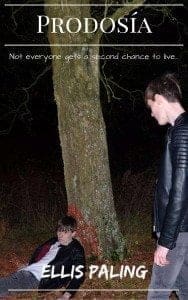 Selene – I picked up Prodosia, and I thought it was an interesting if unusual premise. Since vampires are supposed to already be dead (or undead), the idea of what happens to them when they die is an interesting thing to contemplate. What inspired Prodosia?
Selene – I picked up Prodosia, and I thought it was an interesting if unusual premise. Since vampires are supposed to already be dead (or undead), the idea of what happens to them when they die is an interesting thing to contemplate. What inspired Prodosia?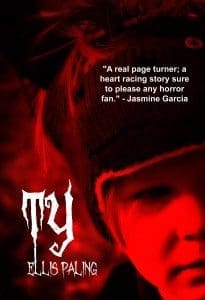 Ellis – Yes, Prodosia was inspired by ‘Chalk Outline’ by Three Days Grace, and a certain chapter in TY was inspired by the music video for ‘So Cold’ by Breaking Benjamin. I have a lot of favourite bands, and off the top of my head, I can list a few. Breaking Benjamin, KoRn, Linkin Park, Nirvana, Three Days Grace, Rage Against The Machine, and even Sum 41. And one of my favourite musicians is Joseph Bishara (he isn’t in a band, but he’s amazing!) He composed the score for Insidious with shrieking violins that are absolutely terrifying, and I even wrote Ty along to that same score.
Ellis – Yes, Prodosia was inspired by ‘Chalk Outline’ by Three Days Grace, and a certain chapter in TY was inspired by the music video for ‘So Cold’ by Breaking Benjamin. I have a lot of favourite bands, and off the top of my head, I can list a few. Breaking Benjamin, KoRn, Linkin Park, Nirvana, Three Days Grace, Rage Against The Machine, and even Sum 41. And one of my favourite musicians is Joseph Bishara (he isn’t in a band, but he’s amazing!) He composed the score for Insidious with shrieking violins that are absolutely terrifying, and I even wrote Ty along to that same score.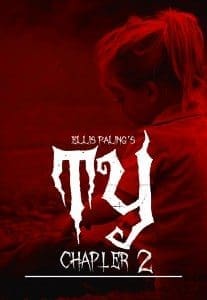 Selene – As a newer writer, if there’s one thing you could change about horror literature, or accomplish with your writing, what would it be?
Selene – As a newer writer, if there’s one thing you could change about horror literature, or accomplish with your writing, what would it be? Selene -Thank you for taking the time out for our interview. First, tell us a bit about yourself.
Selene -Thank you for taking the time out for our interview. First, tell us a bit about yourself. 
 Selene – First, tell us a bit about yourselves, and your background in writing and art. The bio info on your websites is a little thin.
Selene – First, tell us a bit about yourselves, and your background in writing and art. The bio info on your websites is a little thin. Patrick – I have been at this art thing for over 15 years, with experience in games, multimedia, art direction and comics. I’ve done a lot of tabletop game and CCG work, so many people know my art without having any idea who I am, including popular games like Arkham Horror, Call of Cthulhu, World of Warcraft’s Hearthstone, Dungeons & Dragons, Legend of the Five Rings, Numenera, World of Darkness, and nearly 100 cards for the Game of Thrones CCG.
Patrick – I have been at this art thing for over 15 years, with experience in games, multimedia, art direction and comics. I’ve done a lot of tabletop game and CCG work, so many people know my art without having any idea who I am, including popular games like Arkham Horror, Call of Cthulhu, World of Warcraft’s Hearthstone, Dungeons & Dragons, Legend of the Five Rings, Numenera, World of Darkness, and nearly 100 cards for the Game of Thrones CCG.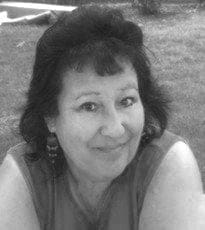 Selene – First, tell us a bit about yourself.
Selene – First, tell us a bit about yourself.
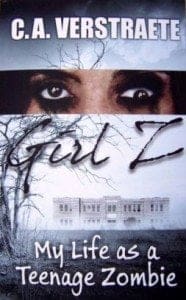 Selene – Do you consider zombies a metaphor or analogy for something else? I’m looking at your book Girl Z: My Life as a Teenage Zombie, about a teenager half-changed into a zombie.
Selene – Do you consider zombies a metaphor or analogy for something else? I’m looking at your book Girl Z: My Life as a Teenage Zombie, about a teenager half-changed into a zombie.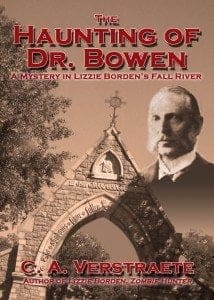 Selene – A story like Lizzie Borden, Zombie Hunter or The Haunting of Dr. Bowen requires a great deal of historical detail. What role does research play in your writing?
Selene – A story like Lizzie Borden, Zombie Hunter or The Haunting of Dr. Bowen requires a great deal of historical detail. What role does research play in your writing? Selene – First, tell us a bit about yourself, and what current projects you have on the go.
Selene – First, tell us a bit about yourself, and what current projects you have on the go.  Selene – Only The Dead was set during the Vietnam War era, and the protests of the time provide a backdrop to the story. Robert Reich noted that in our current political climate, he’s seeing protests and political involvement that we haven’t seen since those days. There are definite parallels between that time and today, so why did you choose to write about the Vietnam era?
Selene – Only The Dead was set during the Vietnam War era, and the protests of the time provide a backdrop to the story. Robert Reich noted that in our current political climate, he’s seeing protests and political involvement that we haven’t seen since those days. There are definite parallels between that time and today, so why did you choose to write about the Vietnam era?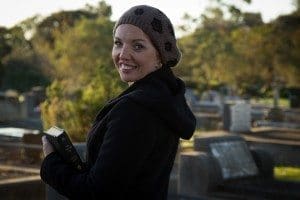 Selene – First, tell us a bit about yourself. I see you’ve got a Hallowe’en story in an anthology coming out this month.
Selene – First, tell us a bit about yourself. I see you’ve got a Hallowe’en story in an anthology coming out this month.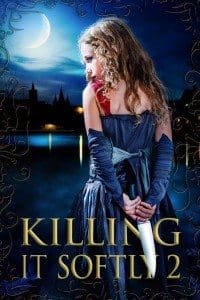 I’ve got a couple of publications due out this Halloween season: One of my poems, ‘Cycle’ is included in Killing It Softly – The Best of Women in Horror Vol 2. I’ve also got a flash fiction piece ‘Knock Knock’ in Trickster’s Treats, a Halloween themed magazine with thirty-six stories, covering six creepy themes.
I’ve got a couple of publications due out this Halloween season: One of my poems, ‘Cycle’ is included in Killing It Softly – The Best of Women in Horror Vol 2. I’ve also got a flash fiction piece ‘Knock Knock’ in Trickster’s Treats, a Halloween themed magazine with thirty-six stories, covering six creepy themes.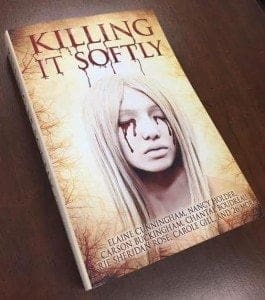 Selene – Congratulations on your middle-grade novel that’s coming out in 2018. Tell us a bit about it.
Selene – Congratulations on your middle-grade novel that’s coming out in 2018. Tell us a bit about it.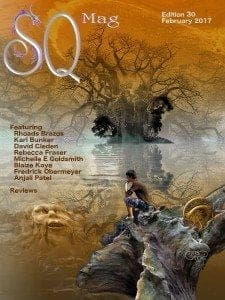 Selene – Other than the ocean, where do you get your ideas? OK, I know that’s a cliché, but inspiration is so varied from author to author!
Selene – Other than the ocean, where do you get your ideas? OK, I know that’s a cliché, but inspiration is so varied from author to author!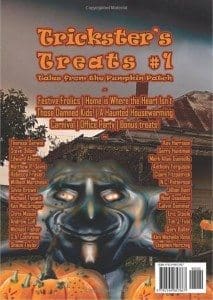 Selene – If you weren’t a writer, what else would you be doing?
Selene – If you weren’t a writer, what else would you be doing? 